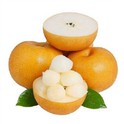As a seasoned supplier of pear varieties, I've witnessed firsthand the challenges that farmers and orchardists face, especially when it comes to water scarcity. Droughts can be a real headache, threatening the livelihoods of those who rely on pear cultivation. So, the question on many minds is, "Are there any pear varieties that are drought-tolerant?" Let's dive into this topic and explore the options available.
Understanding Drought Tolerance in Pears
Before we start looking at specific pear varieties, it's important to understand what drought tolerance means in the context of pears. Drought tolerance refers to a plant's ability to survive and produce fruit under limited water conditions. This can be due to a variety of factors, such as deep root systems that can access water from deeper soil layers, thick waxy leaves that reduce water loss through transpiration, or the ability to go dormant during dry periods.
It's also worth noting that drought tolerance is not an all-or-nothing trait. Some pear varieties may be more drought-tolerant than others, but they still need some water to survive and produce a good crop. Additionally, the level of drought tolerance can vary depending on factors such as soil type, climate, and management practices.
Drought-Tolerant Pear Varieties
Now, let's take a look at some pear varieties that are known for their drought tolerance.
Kieffer Pear
The Kieffer pear is a popular choice for growers in areas with limited water. This variety is a cross between a European pear and a Chinese sand pear, which gives it a unique combination of traits. Kieffer pears have a relatively deep root system, which allows them to access water from deeper soil layers. They also have thick, leathery leaves that help reduce water loss through transpiration.
Kieffer pears are known for their hardiness and adaptability. They can tolerate a wide range of soil types and climates, including hot, dry summers. The fruit is large and has a sweet, juicy flavor, making it a popular choice for both fresh eating and canning.


Bartlett Pear
The Bartlett pear is one of the most well-known pear varieties in the world. While it may not be as drought-tolerant as some other varieties, it can still perform well in areas with moderate water availability. Bartlett pears have a moderate root system that can access water from the upper soil layers. They also have relatively thin leaves, which means they may lose more water through transpiration than some other varieties.
However, Bartlett pears are known for their high productivity and excellent flavor. The fruit is large, juicy, and has a sweet, aromatic taste. It is a popular choice for fresh eating, canning, and making pear juice.
Anjou Pear
The Anjou pear is another variety that is relatively drought-tolerant. This variety has a deep root system that can access water from deeper soil layers. It also has thick, waxy leaves that help reduce water loss through transpiration. Anjou pears are known for their hardiness and adaptability. They can tolerate a wide range of soil types and climates, including cold winters and hot, dry summers.
The fruit of the Anjou pear is medium to large in size and has a sweet, juicy flavor. It is a popular choice for both fresh eating and cooking.
Lovely Sweet Pear
The Lovely Sweet Pear is a unique variety that is known for its exceptional drought tolerance. This variety has a deep, extensive root system that allows it to access water from deep within the soil. It also has thick, succulent leaves that help reduce water loss through transpiration.
The Lovely Sweet Pear produces large, sweet, and juicy fruit that is perfect for fresh eating. The flavor is a delightful combination of sweetness and acidity, making it a favorite among pear lovers.
Tips for Growing Drought-Tolerant Pears
In addition to choosing drought-tolerant pear varieties, there are several other things you can do to help your pears thrive in dry conditions. Here are some tips:
Choose the Right Location
When planting pears, choose a location that receives full sun and has well-drained soil. Avoid planting in low-lying areas where water may accumulate.
Mulch
Mulching around the base of your pear trees can help retain moisture in the soil. Use a layer of organic mulch, such as wood chips or straw, to cover the soil around the trees. This will help reduce evaporation and keep the soil cool.
Water Efficiently
When watering your pear trees, it's important to do so efficiently. Water deeply and infrequently, rather than shallowly and often. This will encourage the roots to grow deeper into the soil, where they can access water more easily.
Prune Regularly
Pruning your pear trees regularly can help improve their overall health and reduce water loss. Remove any dead, diseased, or damaged branches, as well as any branches that are crossing or rubbing against each other.
Fertilize Properly
Fertilizing your pear trees properly can help them grow strong and healthy. Use a balanced fertilizer that is specifically formulated for fruit trees, and follow the instructions on the package carefully.
Contact Us for Drought-Tolerant Pear Varieties
If you're interested in purchasing drought-tolerant pear varieties for your orchard or garden, we'd love to hear from you. As a leading supplier of pear varieties, we have a wide selection of drought-tolerant varieties available, including Kieffer pears, Bartlett pears, Anjou pears, and Lovely Sweet Pear.
Our team of experts can help you choose the right varieties for your specific needs and provide you with all the information and support you need to grow healthy, productive pear trees. Contact us today to learn more about our products and services, and to start planning your pear orchard.






